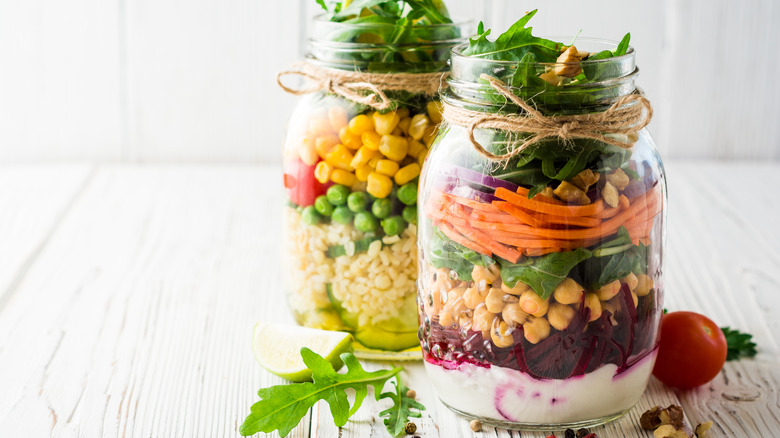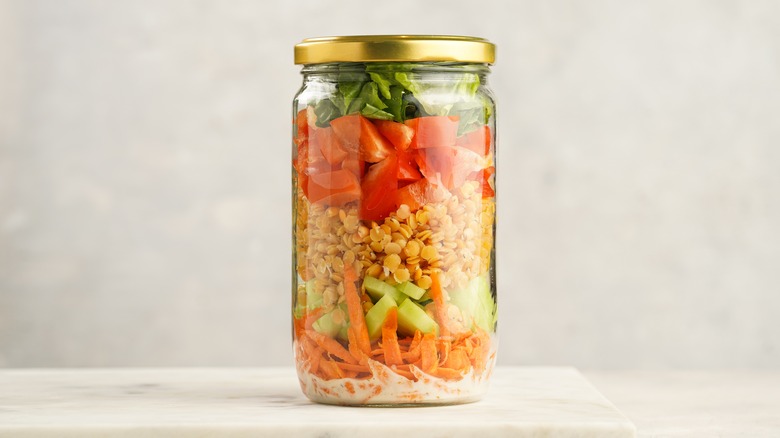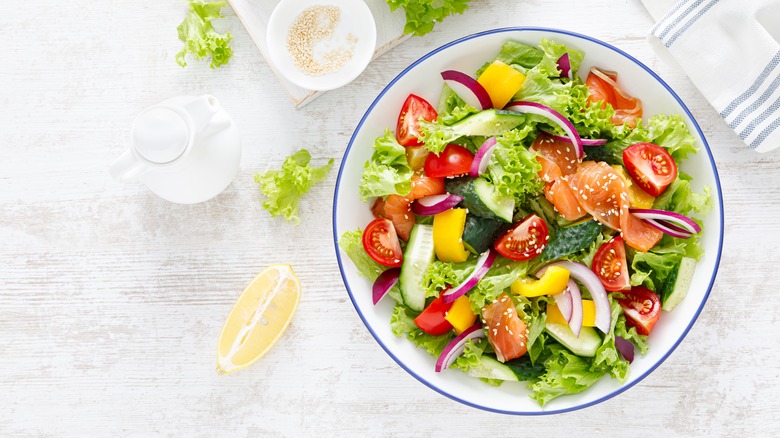Why Layers Are So Important When Making Salad Ahead Of Time
Whether you're preparing your weekly lunch or planning to make a big one as part of a dinner party, salad is one of those dishes that can be tough to make ahead of time. If you don't build it properly, salads can turn soggy within just a few minutes, but thankfully, there are some tricks to ensuring you never meet (or eat) a soggy salad. The most important rule is to keep the dressing separate from anything delicate — buffer it with heartier veggies. It comes down to layering the ingredients to ensure the dressing doesn't make the other elements soggy by adding a sturdy vegetable in between.
You should position heartier, more robust veggies next to the dressing because they can stand up to that vinaigrette or creamy sauce while also preventing the more fragile salad ingredients from touching the dressing too soon. Follow this setup and meal prep will be easy now and still delicious later.
Layer your salad so the dressing is on the bottom
Nobody wants a soggy salad. The best way to prevent encountering one is to have as few ingredients touching the salad dressing as possible, since the dressing is the main culprit for turning that lettuce limp and those vegetables mushy. To properly layer the salad, add the dressing to the bottom, followed by sturdy vegetables like peppers or broccoli. Those vegetables will act as a barrier between the dressing and the other ingredients, which will keep the salad fresh. Since they're thick, substantially hearty produce, they won't wilt upon meeting some ranch or green goddess.
Greens like lettuce or spinach should be the last layer on the salad; these are the most delicate of all the ingredients, meaning they should be as far away from the dressing as possible. Less-hearty vegetables, as well as proteins, should go in between that first veggie layer and the greens. From there, the salad can be stored and taken as a lunch the next day or prepped for a party ahead of time.
How far in advance can you make a salad?
While the layering method is meant for building salads in advance, it still incorporates plenty of fresh produce, so you shouldn't make it too early. How long your salad lasts will depend heavily on the produce used since shelf lives vary. Tomatoes, for example, rapidly lose flavor once refrigerated, so if you have chopped tomato in your salad, eat it as soon as possible. Most greens stay fresh for around four days, while more solid vegetables like broccoli might last up to five days. Since the produce could go bad at different times, it's best to consume the salad while the produce with the shortest shelf life is still fresh.
If you want to prepare your salad at the start of the week for meal prep, you're better off using kale leaves, as they will easily last an entire week. Other long-lasting veggies to include in your salad are carrots, which will last three weeks, along with radishes and beets, which will last up to two weeks. Keep in mind that if you plan to add protein, chicken and shrimp will both only last up to four days once cooked.


